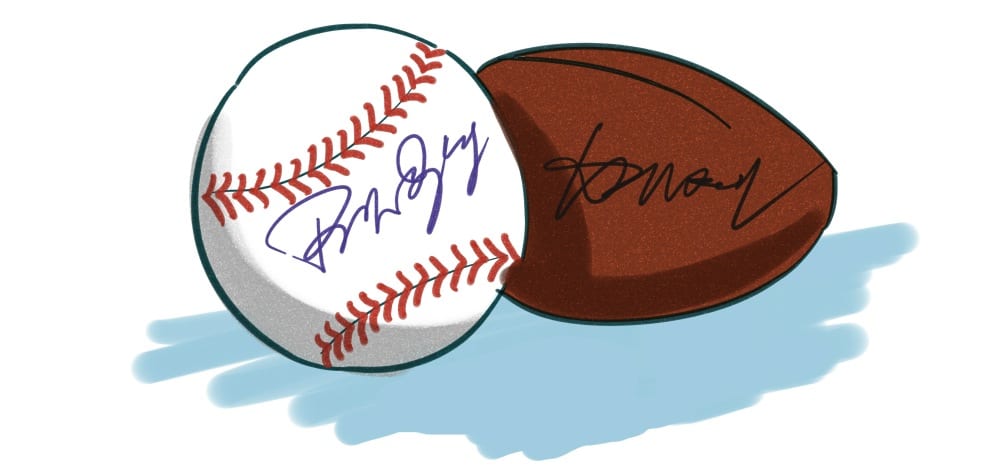A “hound,” in the context of sports, is someone who hunts down athletes in order to have them sign their name on a photo, card, ball, or other piece of memorabilia. Most fans find value in memorabilia, especially when it is rare or signed, but hounds will do anything to augment the value of their pieces. They push aside kids, elderly fans, and anything that may get in their way in order to demand a signature from their target athlete.
Many hounds will sell their signed items online or to collectible stores in order to make a profit. However, this is not merely a hobby or a way to make a little extra money on top of their day job’s salary — many are able to make their living off of hounding.
The reason why these items have such a high value is ambiguous, but remains present. Whether fine-tip or traditional, black or blue, the style of the Sharpie doesn’t matter: the name scribbled on the item gives it a higher value that it formerly had.
Fans’ admiration of sports memorabilia goes to a level further than just owning souvenirs. Millions of people visit the National Baseball Hall of Fame, the Hockey Hall of Fame, and other museums of sports every year in order to admire rare and historical relics of the game. The loonie that sat under the Olympic ice as a good luck charm for the Canadian hockey team in 2002 and Curt Schilling’s bloody sock from game six of the 2004 American League Championship Series sit behind glass and are admired by fans daily.
Historical value is present in all of these items that are on display in these institutions. To the sport and its fans, these objects hold strong significance, to the history of the game, players’ progressions through the sport, and the importance of the moment in which they were used.
Sports fans place significance on these items in a similar way to the significance placed on religious relics by the followers of the given religion. Many would flock to see sacred religious relics, as die-hard Yankee fans will travel to Cooperstown to see the Babe’s glove.
Along with the significance placed on memorabilia, stadiums, fields, rinks, and courts are seen as historical monuments as well as simply the home of their team. Spread throughout the buildings are plaques explaining significant historical events which have taken place in the buildings.
Unique aspects of the buildings hold historical and spiritual importance for fans. Without the right field foul pole, “Pesky’s Pole,” Fenway Park wouldn’t be Fenway Park. Without ivy covering the red brick outfield wall in the north side of Chicago, Wrigley Field wouldn’t be Wrigley Field.
Some fans will aim to see every field or arena within a given period of time, or make it a priority to visit a city’s team’s stadium when travelling. Meanwhile, many who travel make a point of visiting monumental synagogues, churches, cathedrals, and mosques everywhere they go. In Vatican City, more tourists can be found than residents of the country or surrounding city, Rome.
Baseball stadiums are often compared to cathedrals. The hall of fame is designated as a “shrine to baseball.” This connection between the material things in religion and sports is just another way in which parallels can be drawn between the two institutions; this occurs on a much larger scale than a player who will point upwards to the sky after scoring a go-ahead run in the late innings of a baseball game.


